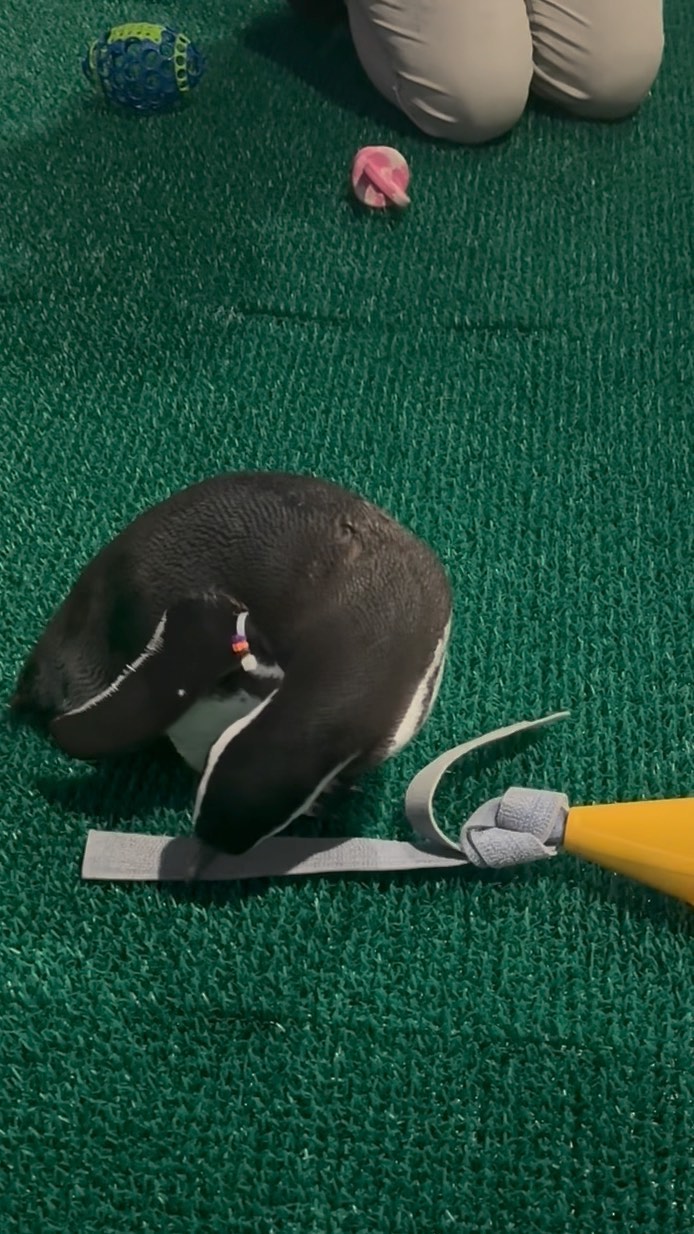- Benefits of play for Magellanic penguins in captivity: physical stimulation and behavioral enrichment
- Characteristics and behaviors of Magellanic penguins relevant to their playtime habits
- The role of zookeepers and conservationists in facilitating animal play and its impact on penguin welfare
- Evolutionary advantages of play: how playful behaviors observed with toys mirror natural penguin interactions
- Case study: Loma, the Magellanic penguin, and the educational impact of observing penguin play
Magellanic penguins are a fascinating species native to South America, known for their distinctive markings and charismatic behaviors. These birds engage in various activities in the wild that keep their bodies strong and minds alert. Captivity, however, can impose limitations on these natural behaviors. This is where toys and playtime become crucial, offering much-needed physical and mental stimulation. Observing Loma, a Magellanic penguin, enjoying playtime with toys provides insight into the significance of play in fostering an enriched environment for animals in captivity.
Toys provide an outlet for energy and encourage natural behaviors such as hunting, pecking, and social interaction. They also break the monotony of a captive setting, encouraging problem-solving and exploration. Playtime isn’t just about amusement – it’s a critical component of an animal’s well-being. For Loma, toys mimic aspects of his natural environment, allowing him to engage in behaviors that are both instinctual and essential for his physical health.
Understanding Magellanic penguins means delving into their unique attributes. They’re social creatures, often found in large colonies during breeding season. This social nature means they thrive on interaction and engagement. Playtime for these birds is often communal, as they are seen in groups frolicking in the water or chasing each other on land. These activities have a purpose beyond mere fun — they help establish social bonds and hierarchies within the group.
Zookeepers and wildlife conservationists play a pivotal role in penguin playtime. Their responsibilities extend beyond basic care; they must also devise engaging activities to stimulate the penguins’ instincts. This includes selecting suitable toys and creating an environment that encourages active participation. Through these efforts, caretakers contribute significantly to the welfare and happiness of penguins like Loma, ensuring they lead a life as close to their natural habitat as possible, given the constraints of captivity.
Play also has an evolutionary advantage. For penguins in the wild, play-like behavior can be a rehearsal for survival skills. Young penguins, for instance, practice chasing and catching prey through playful interactions. They hone their agility and coordination, skills critical to their survival. In captive environments, these evolutionary behaviors can be modeled through playtime. Toys that simulate prey or encourage foraging allow penguins to exercise these innate behaviors.
The case of Loma, the Magellanic penguin, is particularly educational. Observing Loma interact with his toys offers a unique window into the life of these birds. It enables zoo visitors and animal enthusiasts to learn about the species’ behavioral patterns and the importance of play in an engaging, real-world context. Each moment of play is an opportunity for education, illustrating the principles of wildlife conservation and the efforts to maintain animal health and happiness in zoos.
Toys and playtime for Magellanic penguins like Loma are not mere diversions; they are critical tools that foster an environment where these birds can thrive physically and mentally. Engaging in playful activities offers physical exercise, vital for maintaining muscular strength and cardiovascular health. Mentally, it prevents boredom and promotes mental acuity that mirrors their challenges in the wild.
In synthesizing the details of Loma’s playtime, it’s clear that the interplay between penguin behavior, welfare, and conservation efforts is intricate. Observing these animals play is not just delightful; it’s an exercise in understanding their needs and ensuring they are met. Through the lens of zoology and animal management, Loma’s interactions with his toys underscore the broader narrative of animal welfare in captivity—an essential aspect of modern conservation.
In giving Magellanic penguins like Loma the opportunity to play, we do more than entertain them. We acknowledge the richness of their lives and the complexity of their needs, committing ourselves to their continual care and preservation. Through play, we observe and participate in the dynamic story of these remarkable creatures. Loma’s playtime is thus not only a source of joy but also a testament to the ongoing dedication to animal welfare and the necessity of conservation efforts around the globe.
*****
Source Description
Penguin playtime with Loma, the Magellanic penguin! 🐧
Toys like these encourage animals to play, stimulating them both mentally and physically.


